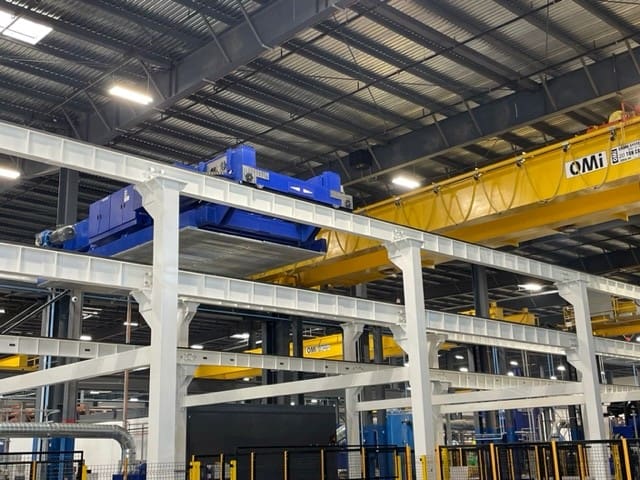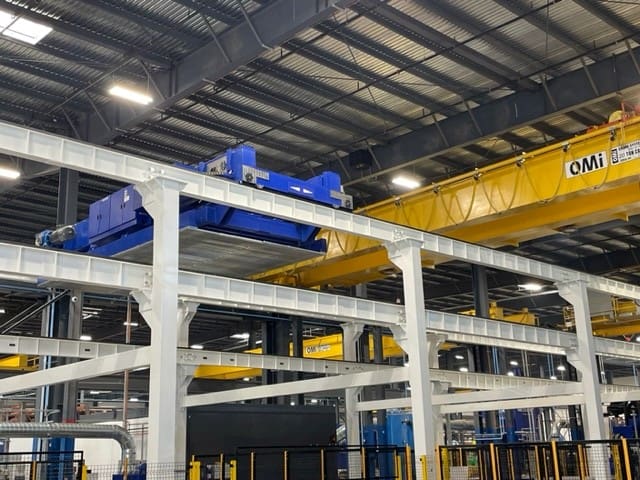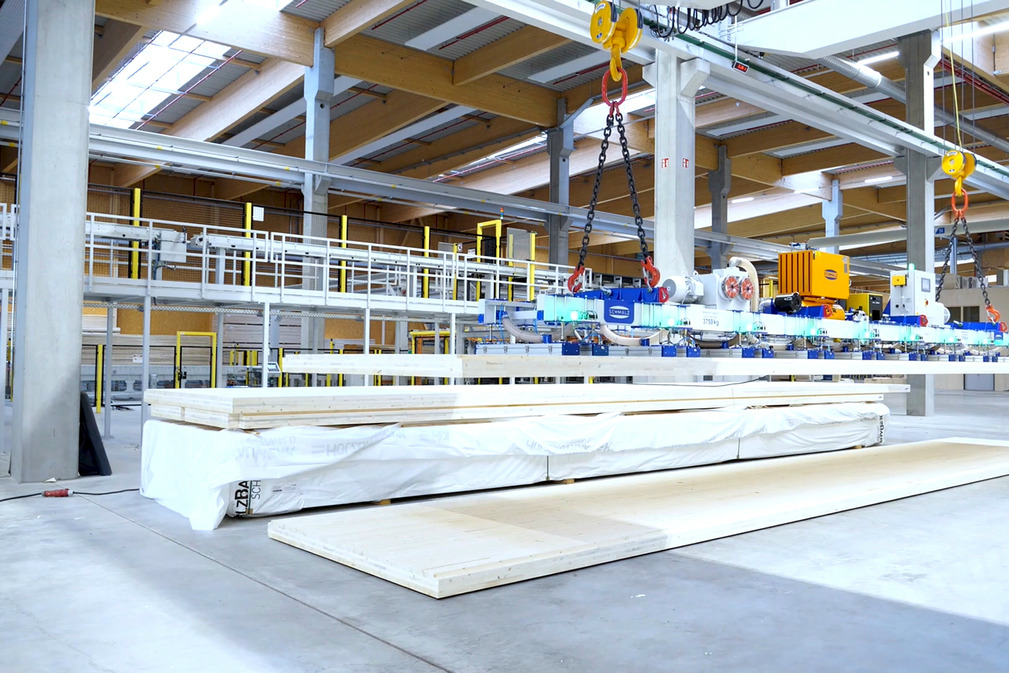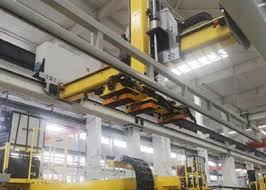
A Bad Pick Can Cost Millions: Why Choosing the Right Handling Method Matters
Material handling is at the core of modern industrial operations—ensuring that goods move efficiently, safely, and accurately from one stage of the process to the next. With the rapid evolution of automation technologies, companies now have a range of options for material handling systems. In this blog, we explore two primary robotic solutions—standard industrial robots and gantry robots—as well as the three most common gripper technologies: fork, suction, and magnetic grippers. By understanding the differences between these systems, manufacturers can select the most appropriate solution for their unique applications.
Standard Industrial Robots

Standard industrial robots, typically in the form of articulated robotic arms, have become a staple in many manufacturing and warehouse operations. Mounted on fixed bases, these robots are engineered with multiple joints—usually four to six axes—that enable them to perform complex, multi‑purpose tasks. Their design, which closely mimics a human arm, makes them highly versatile for operations such as picking, placing, assembly, machine tending, and packaging. Advanced sensor integration and control algorithms also allow these robots to work safely in collaborative environments with human operators.
Key Features:
- Versatility: Easily reprogrammable to perform various tasks and adapt to changing production requirements.
- Precision and Repeatability: Multi‑axis movement combined with sophisticated control systems ensures high accuracy and consistent results.
- Integration: Can be seamlessly integrated into existing production lines and combined with other automation solutions like conveyors and vision systems.
Gantry Robots

Gantry robots, often referred to as Cartesian or linear robots, differ from traditional industrial robots by operating on a rigid, overhead structure that moves along predefined X, Y, and sometimes Z axes. These systems excel in applications that require the handling of heavy payloads over large, fixed areas. Their structured, linear motion enables high-throughput operations and precise, repetitive movements, making them an excellent choice for transferring bulky items or positioning materials in large-scale warehouses and manufacturing facilities.
Advantages and Applications:
- Large Workspace & High Payload: Ideal for moving heavy or bulky items in industrial and logistics environments.
- High Throughput: Their predictable linear motion enables continuous operation with minimal downtime.
- Use Cases: Commonly used in automated assembly lines, material handling, and large‑scale manufacturing operations.
Gripper Technologies
The end‑effector or “hand” of a robot is crucial to its ability to interact with various materials. Depending on the properties of the items to be handled, manufacturers can choose among different gripper technologies. Here, we compare three popular types:
Fork Grippers
Fork grippers operate much like the tines of a forklift, sliding underneath objects to lift them. They are particularly effective for handling palletized loads and items with a flat, stable base.
- Pros:
- Robust handling and high payload capacity.
- Ideal for standard pallet sizes.
- Cons:
- Limited adaptability for irregular or delicate items.

Suction Grippers
Suction grippers use vacuum cups to create a seal on smooth, non‑porous surfaces such as glass, plastic, or metal sheets. This method is particularly well‑suited for delicate items that require a gentle touch.
- Pros:
- Provides a gentle yet firm grip, reducing the risk of damage.
- Quick engagement and release.
- Cons:
- Performance may suffer on textured, porous, or contaminated surfaces.

Magnetic Grippers
Magnetic grippers use permanent or electromagnets to lift ferromagnetic objects. They are especially valuable in environments where dust, oil, or surface imperfections might impair the performance of suction or mechanical grippers.
- Pros:
- Quick and reliable attachment on metal surfaces.
- Low maintenance and highly efficient in industrial settings.
- Cons:
- Limited to handling ferrous materials; coated or painted surfaces may reduce effectiveness.

Selecting the Right Material Handling Solution
Choosing the most suitable system for material handling involves considering several factors:
- Material Characteristics: Assess the weight, shape, texture, and fragility of your items to determine whether a fork, suction, or magnetic gripper is appropriate.
- Volume & Throughput Needs: High‑volume operations might benefit from the structured motion of gantry robots, while standard industrial robots offer flexibility for diverse tasks.
- Workspace Layout: Gantry systems require dedicated space and fixed tracks, whereas standard industrial robots can be more easily integrated into existing facility layouts.
- Safety & Ergonomics: Modern automation systems minimize manual intervention, thereby enhancing worker safety. Collaborative features in standard industrial robots allow safe operation alongside humans.
Future Trends in Material Handling
The field of material handling is continually evolving, driven by advancements in robotics, artificial intelligence, and digital connectivity. Key trends to watch include:
- AI and Machine Learning: Enhanced control systems that optimize routing and predictive maintenance.
- IoT Integration: Real‑time monitoring and data analytics for improved operational efficiency.
- Expansion of Collaborative Systems: Further development of robots that work safely alongside human operators.
- Sustainable Solutions: Innovations aimed at reducing energy consumption and minimizing environmental impact.
Whether you opt for the flexibility and precision of standard industrial robots or the heavy‑duty efficiency of gantry systems, understanding the nuances of each system is essential for optimizing your material handling processes. Similarly, choosing the right gripper technology—be it fork, suction, or magnetic—can have a significant impact on the efficiency and safety of your operations. By evaluating your material characteristics, throughput requirements, and workspace layout, you can implement a solution that not only enhances productivity but also paves the way for a more automated and efficient future.
KIE Solution excels in delivering tailored automation strategies that address the unique material handling challenges of each client. Unlike other integrators who may offer generic solutions, KIE conducts comprehensive assessments to determine the most effective technologies, be it industrial robots, gantry systems, forks, suction mechanisms, or magnetic handlers, ensuring optimal performance and return on investment. By analyzing your specific processes and requirements, KIE designs automation solutions that enhance efficiency and productivity.
To explore how KIE Solution can revolutionize your operations with customized automation. Our team is ready to discuss your needs and provide solutions that drive success.
